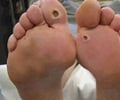Digital diabetic retinopathy screening increases access and improves health outcomes for low-income minority patients with diabetes.

Diabetic Retinopathy Screening with Automated Retinal Image Analysis in a Primary Care Setting Improves Adherence to Ophthalmic Care
Go to source).
Enhancing Diabetic Retinopathy Screening through Targeted Interventions and Eye Dilation
By identifying patients needing screening before appointments and using electronic health record reminders, the clinic increased the rate of interpretable exams from 20% in November 2022 to 35% in May 2023.‘Did You Know?
57% of patients not seen in a year and 65% seen within the year received diabetic retinopathy screening by January 2024! #diabeticeyecare #retinopathyscreening #medindia’





That same month, the clinic began offering eye dilation to patients over 64 years of age and those who failed non-dilated exams. This change reduced the insufficient exam rate from 36% to 22% over the following eight months. 57% of patients not seen in a year and 65% seen within the year received diabetic retinopathy screening by January 2024! #diabeticeyecare #retinopathyscreening #medindia’
The clinic’s retinopathy detection rate increased from 11% to 18% between September 2022 and January 2024. By January 2024, the screening rate was 57% for patients not seen in a year and 65% for those seen within the year.
The greatest increase in retinopathy screening came after clinic managers started tracking patients who needed screening prior to their appointments, and reminding staff through the electronic health record to perform screening.
Offering dilated eye exams further reduced the rate of insufficient exams. Overall, the strategy of using in-clinic retinal photographs with software interpretation and selective eye dilation effectively increased screening rates for our patients from socially disadvantaged populations.
Reference:
- Diabetic Retinopathy Screening with Automated Retinal Image Analysis in a Primary Care Setting Improves Adherence to Ophthalmic Care - (https://www.ncbi.nlm.nih.gov/pmc/articles/PMC8546907/)
Source-Eurekalert















